One of the best screenwriting teachers around is William C. Martell. You should check his site out. Quite some time he penned this article about writing for Indies on a budget. It’s an ode to Roger Corman and has some timeless lessons that can be applied to writing for digital D.I.Y. movies today.
Now, to show the love and care I have for you Good Reader, and all Script Gods readers, I am resurrecting this article, and presenting it here. It has nothing to do with the fact that it’s November in the year of our Lord 2014 and I am feeling a bit shut in today.
Therefore, without further ado…
- CORMAN: MR. INDIE
I think there are three good reasons why any look at writing Indie films needs to include the only film producer in the world who has never lost money on a single film… and made more films than most studios.
Let’s start with “Piranha”, or that “Star Wars” rip-off “Battle Beyond The Stars”, or the T&A gangster movie “Lady In Red”. All three were written by John Sayles, the king of Indie film makers. “Piranha” was his first produced script… Sayles learned from Corman how to write films that could be shot on a limited budget, and took that knowledge (and his script earnings) to the art house world with “Return Of The Secaucus Seven” in 1980. Sayles wasn’t the only one who started with Corman: Francis Ford Coppola, Patrick Shane Duncan, Martin Scorsese, Terence Malick, Carl Franklin, Jonathan Kaplan, and hundreds of others began their careers with the King of the Bs.
Second: Corman is an actual Indie producer. He’s not affiliated with any studios, he makes whatever he wants to make, his films are privately financed. He makes Indie genre movies…
- IT’S THE BUDGET
But even if you do have a great Indie script and want to direct and produce your own film, there’s a lot that you can learn from Roger Corman. The first rule of Indie films: There’s never enough money and there’s never enough time. Studios can solve problems by throwing money at them, but Indies have to use ingenuity, imagination, and pre-planning. Indie films are made by design, and the set is the last place to discover that your script is too expensive to film on your budget. The key is to DESIGN a script that is both easy and inexpensive to shoot.
Time is money. Even on a credit card film where the cast and crew are friends you’ve talked into working for free, there’s a limit to how long they’ll donate their time. These people don’t want to spend their entire lives working on your dream, they have dreams of their own!
So here are over a dozen techniques for writing a film that can be made on an Indie’s limited budget. I learned all of these things the same way John Sayles did, from writing genre movies for low budget producers like Roger Corman.
- CONCEPT
Every new location means a crew move. The producer has to pay the crew to pack all of the equipment into the truck, drive to the new location, and unpack the truck. That is wasted money. So the fewer crew moves in your script the better.
Say you wanted to do a movie about a pair of Lesbians who share a drive cross country, begin hating each other, but end up falling in love: “When Harriet Met Sally”. That’s hard to do on a limited budget because it’s a “traveling story”, with lots of different locations and lots of characters at each location.
So, let’s change it to a more budget friendly concept: A pair of Lesbians become reluctant room mates, begin hating each other, but end up falling in love. “The All Gyrrl Odd Couple”. Easy to do on a limited budget. There is a central location where most of the story takes place (the apartment). The focus is on the two lead characters (which actually improves the story) and secondary characters either come to visit, or are people they encounter in the corner coffee/poetry shop. Because half of your script shoots at the central location, you can “walk away” at the end of the day – no time or money wasted on crew moves.
- THE CENTRAL LOCATION
If you’re filming about half of your film at the central location, you need to find a place where drama and conflict can take place. “Reservoir Dogs” takes place in the warehouse a bunch of armed robbers are going to meet in to divide their loot. My “Steel Sharks” movie for HBO had two central locations: The sub control room where Gary Busey guided the submarine and the Aircraft Carrier control room where Billy Dee Williams ran the whole operation. We cut between these two locations and the half dozen others so that every couple minutes we were someplace new – no boring backgrounds. Take care to find a location where different types of people will bump into each other – that leads to conflict.
- LIMITED LOCATIONS
Now that we’ve come up with our central location, we’ll want a few other locations to “open up” the script. How many total locations will you have in your Indie script? Usually between four and eight. That’s not very many, but it’s all you can afford. You may go as high as ten… but if your script has 20 locations and you only have 18 shooting days, you’re in a heap-o-trouble!
Remember to build contrast between your locations. If your central location is indoors, make sure some of your secondary locations are outdoors. We don’t want a claustrophobic script!
One of my tricks is to take a ruled 3 x 5 index card, number it from 1 to 8. Every time you type a new slug line, write it down. When you’ve filled the card, no more slug lines: you have to choose someplace already on the card.
“Establishing shots” (without actors) don’t count as locations. These can be shot by a 2nd unit team with the B camera while you’re shooting your stars at another location.
Beware INT. and EXT. of the same location… they may be different locations for filming purposes! On one of my films we shot the exterior of a house in Beverly Hills and the interior (the actors) miles away in the San Fernando Valley. We couldn’t find a house that had both a great interior AND a great exterior. Your INT. and EXT. may be two locations – so plan your script as if they were.
- LIMIT SPEAKING ROLES
Indie movies don’t have casts of thousands. Every speaking character has to be paid so the fewer speaking roles the better. Try to keep your cast at ten to fifteen. This actually makes for a stronger script because you are forced to make sure every character has a purpose.
Also limit the number of extras, and crowd scenes. You may think nothing of having a scene in a poetry reading, a scene in a restaurant, and a scene at a concert… but that’s THREE crowd scenes where you will have to pay $50-$100 per person to fill the location. One “extra location” is about all an Indie film can handle, and make sure we’re talking about a DOZEN extras, not a HUNDRED.
- CONFINED CAMEOS
A couple of good character roles that can be cast with known actors who NEVER LEAVE a single location can add production value to an Indie movie. Put your mentor character in that secondary coffee shop location and have her dispense wisdom in a series of scenes weaved throughout the script. Let’s say you have six coffee house scenes that are each about three minutes long – those can be filmed in two days. Hire a known actress for the mentor role and it will seem like she’s in the whole movie!
A few character parts like this (each one confined to a single location) woven through the entire script, can give your film an All Star Indie Cast, without spending much money!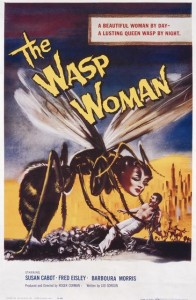
- THE UNCONTROLLABLES
Don’t write about things you can’t control. Kids, weather, animals, special effects. Kids are only allowed to work half a day on a film set, and the producer must pay for a Child Welfare Officer or/and Teacher to be present at all times. Whenever you write a kid in your script, you are paying for an adult who will NOT appear on screen.
Animals are like kids: They come with human trainers who have to be paid, even though they don’t show up on screen. Animals and kids don’t always do what they’re told, which costs the production valuable time.
Writing a scene where it’s raining outside is much easier than forcing it to rain on a bright, sunny day. Weather effect require a crew of technicians with expensive equipment. The same with special effects – you are paying for people who don’t appear on screen. That’s a waste of money!
- REMEMBER THE AUDIENCE
Film is mass communication. The ART in film making is story telling. Telling a story to a large group of people. That means your story has to be INTERESTING. No one wants to pay $8 to hear a boring, self-centered story. If you want to “tell stories for yourself” you don’t need to make a film – just lock yourself in a room and tell yourself all of the stories you want to hear. Eventually, they’ll come and take you to the nut house.
Tell an interesting story that millions of people will want to see. That millions will PAY to see. You want to get your story to the largest possible audience – that means your story has to be something they want to hear. When we’re sitting alone in our rooms writing it’s sometimes hard to remember the millions of people on the other side of the screen. But they’re out there… waiting for us to entertain them. Don’t let them down!
- GENRE?
Covered earlier. They way to make sure your story reaches the largest number of people is to tell it in a recognizable genre. Remember that “drama” is the default genre of every film (including comedies) – so you will appeal to a larger audience by having “drama plus” – plus thriller, plus comedy, plus romance, plus action, plus horror. Just because you’re in a genre, doesn’t mean your story isn’t dramatic with dramatic scenes. So look at genre – Roger Corman’s “Piranha” was called the “Best film ever made about the Viet Nam War” by Variety! “Shakespeare In Love” was a romantic comedy.
- IMAGINATION
Just because a film is a thriller doesn’t mean it’s stale and boring. “Run, Lola, Run” is a great example of a wild, imaginative story that is still a fairly basic “beat the clock” thriller. Each of the three acts of “Lola” shows the exact same sequence: Lola has to race across town to get enough money to keep a gangster from killing her boyfriend. But each time, variables change the outcome: she hurts her leg, she gets hit by a car, she hops a ride in an ambulance, etc. Not only is this a cool idea, it saves money! They film the same scenes three times, just adding the variable!
Other ways to use your imagination is to let the audience use their imaginations. In the Val Lewton horror movies from the 1940s like “Leopard Man” and “Cat People” you *imagine* seeing the killer cats, but mostly just hear them or see their shadows. Without money, you need to crank up the imagination!
- SHORT BUT SWEET
Every page equals money spent. Indie films aren’t epics – they are usually around 90-100 minutes long. That minute-a-page guideline means your Indie script will probably be shorter than it’s big budget brother. Roger Corman’s scripts are usually between 85 and 100 pages long… John Sayles’ “Return Of The Secaucus Seven” is under 100 minutes. Page count matters! Every extra page of script will cost you more time and more money!
- STORY DRIVEN
Indie films may not be able to afford great actors, so make sure your story and dialogue carry the film. The special effects aren’t the star, the actors aren’t the star, so the STORY must be the star. A clever concept with lots of great twists adds entertainment value. Great dialogue exchanges with clever lines will help make up for that cast of unknowns. The only thing you can depend on is your script, so make sure it’s the best script ever written.
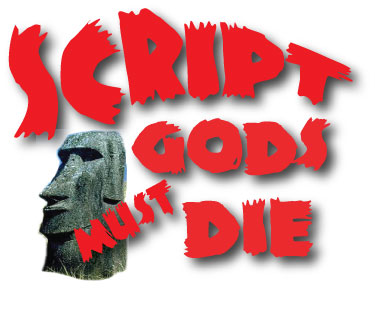
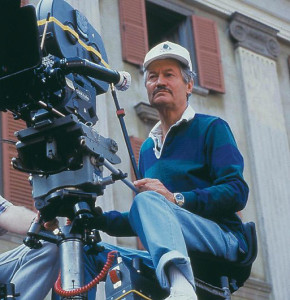
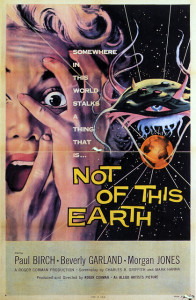
![-Piranha-[Roger-Corman's-Cult-Classics]](http://www.scriptgodsmustdie.com/wp-content/uploads/2014/04/Piranha-Roger-Cormans-Cult-Classics-212x300.jpg)
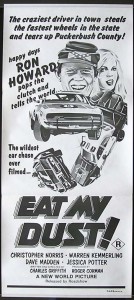
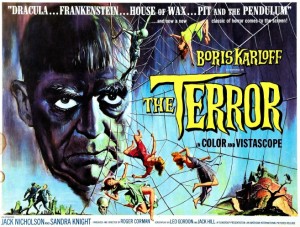
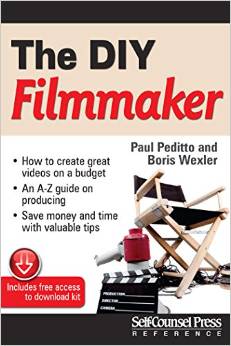
I have decided to be Mr Corman when I grow up. Great read!